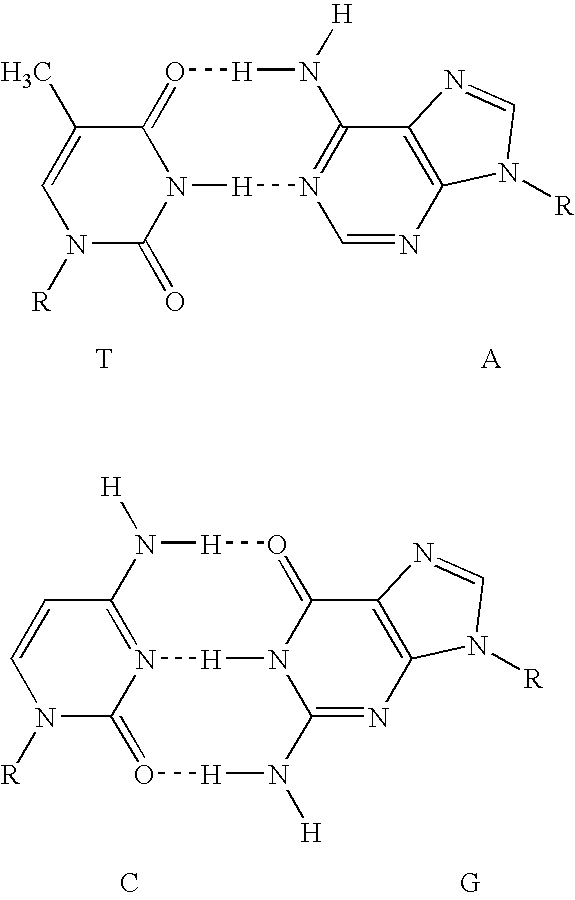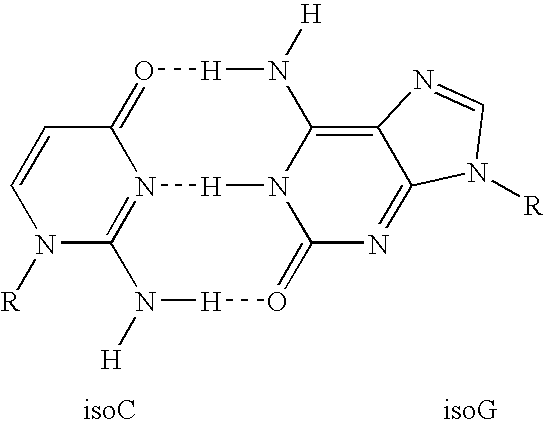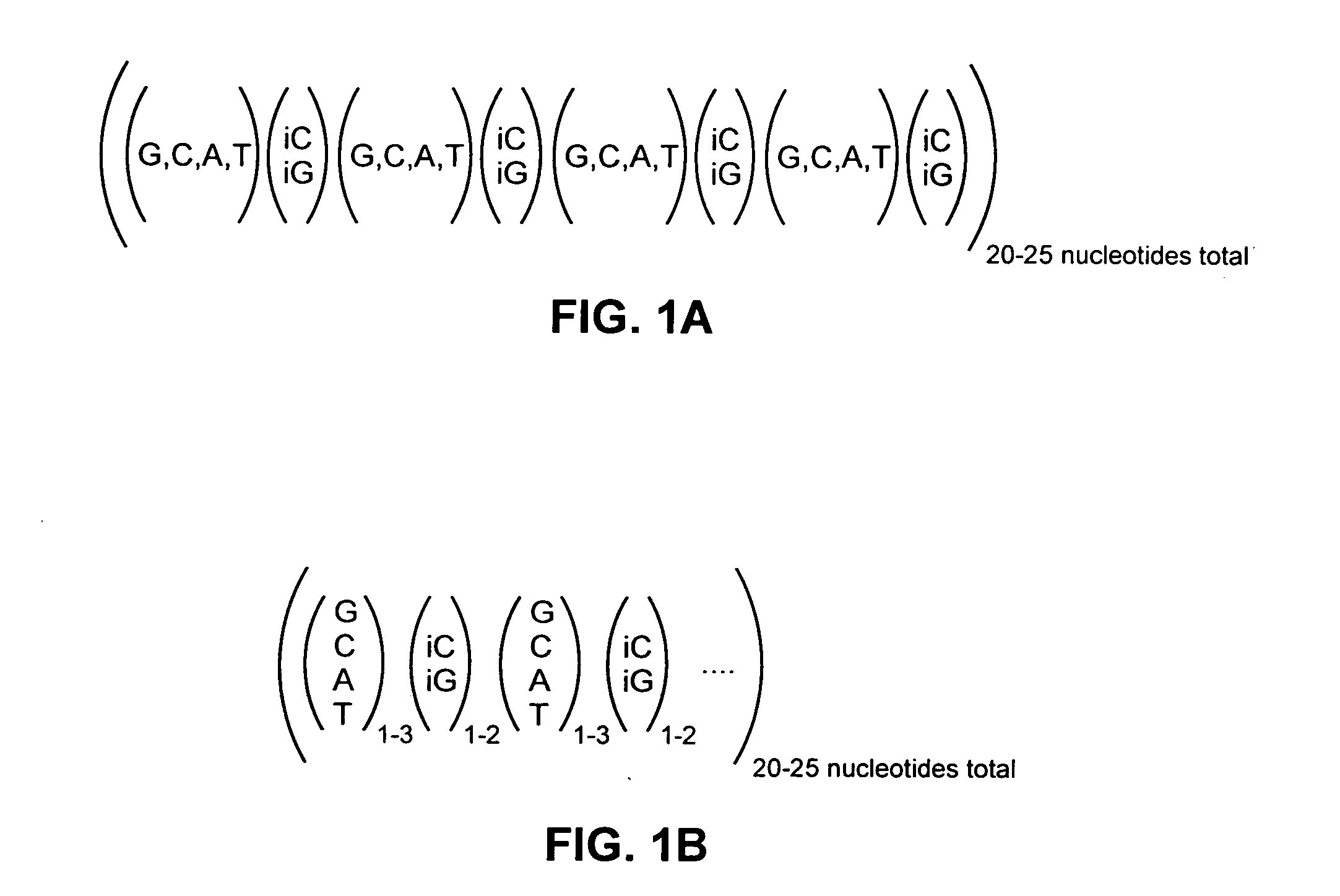Highly orthogonal universal sequences for use in nucleic acid assays
- Summary
- Abstract
- Description
- Claims
- Application Information
AI Technical Summary
Benefits of technology
Problems solved by technology
Method used
Image
Examples
example 1
Generating Orthogonal Universal Sequences with Six-Base Code and No More than 3-mer Interactions
[0089] The following procedure was used to generate eight orthogonal sequences with six-base code having no more than 3-mer interactions between the orthogonal sequences including all complements.
[0090] One hundred random 20-mer System8 sequences were generated from a pool of 128 tetramers with iso-G and iso-C bases at the fourth positions. Out of these 100 sequences, 36 sequences were selected based on a 65% to 70% G / C content (including iso-G and iso-C). The 36 sequences were further reduced to 16 sequences by removing sequences with biased base compositions (compositions that are high on some bases and low on others). An additional isobase (either iso-G or iso-C with an attempt to balance the two bases within the particular sequence) was then added to the 5′ end of each of the 16 sequences (the “orthogonal sequences”).
[0091] The sixteen orthogonal sequences were converted back to th...
example 2
Production of Optimized Orthogonal Universal Sequences
[0094] Multiple optimized CPs were designed from a 20-mer sequence comprised of a six-base code consisting of four natural bases and the two non-natural bases, iso-G and iso-C. FIG. 1A shows a generic structure of the initial 20-mer sequences of the present invention, which were composed of tetramer units consisting of four natural bases arranged in no specific order separated by a single iso-G or iso-C base. To produce probes from the initial 20-mer sequences, the initial sequences were screened according to the procedure set forth in Example 1 in order to produce 33 CPs and 33 CEs having approximately 50% G / C composition and melting points near 80° C. The resulting sequences were used to design a sixplex cytokine assay panel. Because the probes demonstrated some cross-reactivity in the cytokine assay, the probes were further optimized for minimal cross-reactivity by constraining the melting temperature of the probes near 85° C...
example 3
Specificity of Multiplex Cytokine mRNA Assay
[0100] The Universal Orthogonal Sequences CP1-CP9 and CE1-CE9 (SEQ ID Nos.1-22) from Table 1 were used in a multiplex cytokine mRNA quantitation assay using bDNA design principles and the Luminex® suspension array technology for readout. Table 2 shows the performance of the multiplex mRNA assay on approximately 60,000,000 molecules of target for nine cytokines using CP1-CP9 and CE1-CE9. In this experiment, the complete bDNA assay was run for each cytokine. As demonstrated in Table 2, very strong RFU signals were seen on the expected beads and crosshybridization of the selected universal sequences was negligible when compared to the background signal of the assay beads. FIG. 2 shows the results of this assay in a three-dimensional bar graph.
TABLE 2IL-4IL-5IL-2TNF-αINF-γIL-10IL-12 [p35]IL-12 [p40]IL-13IL-48238554612131518IL-59962335710131723IL-2318721457131312TNF-α213756867131312INF-γ213682138131313IL-103535710009131721IL-12 [p35]22357126...
PUM
| Property | Measurement | Unit |
|---|---|---|
| Temperature | aaaaa | aaaaa |
| Temperature | aaaaa | aaaaa |
| Fraction | aaaaa | aaaaa |
Abstract
Description
Claims
Application Information
 Login to View More
Login to View More - R&D
- Intellectual Property
- Life Sciences
- Materials
- Tech Scout
- Unparalleled Data Quality
- Higher Quality Content
- 60% Fewer Hallucinations
Browse by: Latest US Patents, China's latest patents, Technical Efficacy Thesaurus, Application Domain, Technology Topic, Popular Technical Reports.
© 2025 PatSnap. All rights reserved.Legal|Privacy policy|Modern Slavery Act Transparency Statement|Sitemap|About US| Contact US: help@patsnap.com



